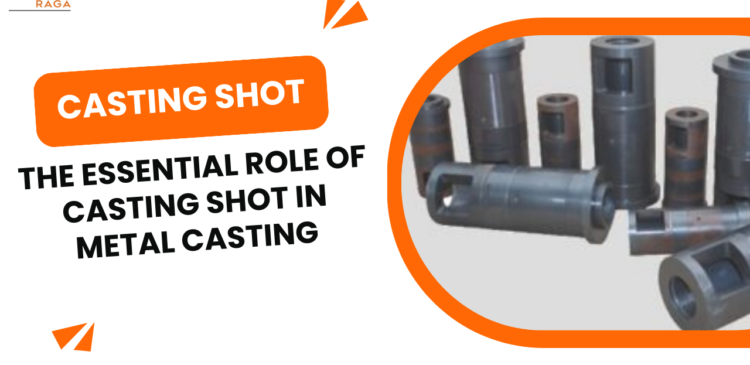The Essential Role of Casting Shot in Metal Casting

Metal casting is a cornerstone of manufacturing, enabling the creation of intricate and durable components. Among the many critical elements of this process, casting shot holds a pivotal role, particularly in industries such as jewelry making. The quality of the casting shot directly impacts the precision and quality of the final product.
Understanding Casting Shot
Casting shot refers to small, uniform metal pellets used as raw materials in the casting process. It plays a critical role by ensuring consistency and precision in alloy composition. Common types of casting shot include gold, silver, copper, platinum, and palladium, each chosen for their unique properties and applications.
The Manufacturing Process of Casting Shot
Material Selection
The choice of materials for casting shot is crucial. High-purity metals and alloys are selected based on their intended applications. For instance, gold and silver are preferred in jewelry making for their luster and malleability, while copper’s conductivity makes it ideal for electrical components.
Production Techniques
The manufacturing process involves melting and alloying the raw materials, followed by granulation to form uniform pellets. Advanced techniques, such as centrifugal granulation and water atomization, ensure consistent size and shape.
Quality Control
Quality control is paramount to ensure purity, consistency, and proper alloy composition. This involves rigorous testing for size uniformity, alloy accuracy, and surface quality.
Applications of Casting Shot
Jewelry Making
Casting shot is indispensable in jewelry making, where precision and quality are paramount. It is used in processes such as casting, soldering, and alloying, ensuring that each piece meets exacting standards.
Industrial Uses
Beyond jewelry, casting shot finds applications in electronics for component manufacturing, dental prosthetics for creating appliances, and art for producing detailed sculptures.
Case Studies
For instance, a jewelry manufacturer using high-purity gold casting shot reported a 20% reduction in defects and rework, improving overall productivity.
Benefits of Using High-Quality Casting Shot
Improved Quality
High-quality casting shot ensures a consistent and reliable metal source, resulting in superior finished products.
Consistency and Precision
Uniform alloy composition allows for precise and accurate castings, reducing variability in production.
Reduced Defects
Using premium casting shot minimizes defects such as porosity and inclusions, thereby reducing rework and waste.
Innovations and Advancements in Casting Shot Technology
Advanced Materials
New alloys and materials with enhanced properties are being developed to meet specific industrial needs.
Technological Advancements
Techniques such as nano-coating and improved granulation processes have enhanced the quality and durability of casting shots.
Sustainable Practices
Manufacturers are increasingly adopting eco-friendly practices, including recycling metals and reducing waste during production.
Choosing the Right Supplier for Casting Shot
Key Considerations
When selecting a supplier, factors such as material quality, production capabilities, and customer support are vital. A reputable supplier will provide consistent and high-quality casting shot.
Future Trends in Casting Shot
Emerging Technologies
Advances in 3D printing and precision granulation are shaping the future of casting shot production.
Market Trends
The demand for specialized casting shot, particularly in sustainable and high-performance alloys, is on the rise.
Conclusion
Casting shot is a fundamental element of the metal casting process, ensuring precision, quality, and consistency across industries. By investing in high-quality casting shot and partnering with reliable suppliers, manufacturers can significantly enhance their casting operations.
FAQs
Q: What is a casting shot, and what role does it play in the metal casting process?
A: Casting shot, also known as casting grain or master alloy, consists of small, unshaped metal pellets used as raw materials in metal casting. It ensures uniformity, high quality, and precise control over alloy composition, making it essential for defect-free castings.
Q: What types of metals are commonly used as casting shot, and what are their properties?
A: Common metals include:
- Gold: Renowned for its malleability, corrosion resistance, and aesthetic appeal.
- Silver: Offers excellent conductivity and high reflectivity.
- Copper: Known for its superior electrical and thermal conductivity.
- Platinum: Extremely resistant to tarnish and corrosion.
- Palladium: A lighter and more affordable alternative to platinum.
Q: How is casting shot manufactured, and what quality control measures are used?
A: The manufacturing process involves melting, alloying, and granulation. Quality control measures include:
- Testing for size uniformity.
- Ensuring precise alloy composition.
- Inspecting for surface quality to maintain consistency.
Q: What are the primary applications of casting shot in various industries?
A: Primary applications include:
- Jewelry Making: Used for casting, soldering, and alloying.
- Electronics: Essential for manufacturing electrical components.
- Dental Prosthetics: Used to create dental appliances.
- Art: Applied in crafting sculptures and intricate designs.
Q: How does using high-quality casting shot benefit the casting process?
A: Benefits include:
- Improved Quality: Ensures a consistent and reliable metal source.
- Consistency and Precision: Maintains uniform alloy composition.
- Reduced Defects: Minimizes rework by preventing defects such as porosity.
Q: What recent innovations and advancements have been made in casting shot technology?
A: Innovations include:
- Advanced alloys for enhanced performance.
- Nano-coating techniques for durability.
- Sustainable production methods that prioritize recycling and eco-friendliness.
Q: How can manufacturers choose the right supplier for casting shot, and what factors should they consider?
A: Key considerations include:
- Material Quality: Ensure high-purity and consistent quality.
- Production Capabilities: Assess the supplier’s capacity to meet demand.
- Customer Support: Look for excellent service and support.
- Reputation: Evaluate customer reviews and testimonials.
